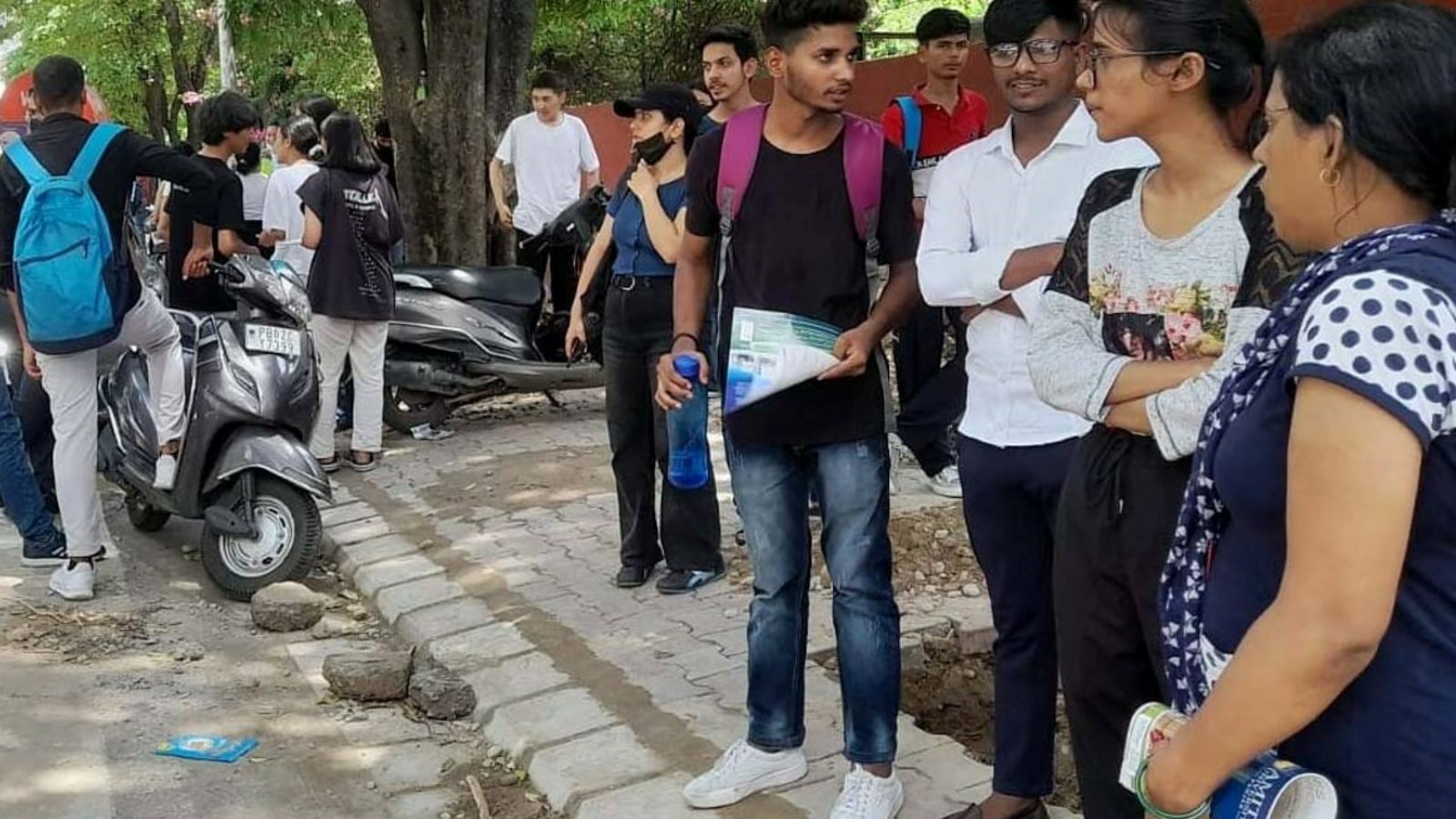 |
|
The National Eligibility cum Entrance Test (NEET-UG) results for undergraduate medical courses have been declared, revealing significant shifts compared to previous years. Most notably, unlike the previous year, where a staggering 17 candidates achieved a perfect score of 720, this year witnessed no candidate securing full marks. The highest score attained was 686, marking a considerable drop from the perfect scores of recent past and even the 715 and 701 scores recorded in 2022 and 2019, respectively. This year's topper is Mahesh Kumar from Rajasthan, who achieved a percentile of 99.9999547. Utkarsh Awadhiya from Madhya Pradesh secured the second rank with a percentile of 99.9999095. The National Testing Agency (NTA), responsible for conducting the NEET-UG exam, released the results, highlighting a notable change in the overall performance landscape. The entrance examination, crucial for aspiring medical students, was conducted under strict surveillance in May, reflecting efforts to maintain the integrity and fairness of the process. The lower top score has impacted the cut-off marks for the general category, which now ranges from 686-144, in contrast to 720-162 last year and 720-137 in 2023. The NTA, which began conducting NEET-UG in 2019, has not released the scores of the top 50 candidates this year, a deviation from past practices. This decision has raised questions and speculations regarding the distribution of scores and the overall performance of candidates. The absence of the top 50 scores data adds a layer of ambiguity to the analysis of this year's results. This contrasts sharply with previous years where a full score of 720 was observed in 2020 and 2021, setting a different tone for this year's outcome. In 2022, the highest score was 715, while in 2019, it was 701. This variability in top scores reflects the fluctuating difficulty levels and scoring patterns over the years.
A total of 22.09 lakh candidates appeared for the NEET-UG exam this year, a decrease from the 23.33 lakh candidates who appeared last year. Out of these, 12.37 lakh candidates qualified, indicating a competitive selection process. Interestingly, female candidates constituted more than half of the total applicants, and a significant 58% (7.22 lakh) of the qualified candidates were female, emphasizing the increasing participation and success of women in medical education. Among the states, Uttar Pradesh recorded the highest number of qualified candidates with 1,70,684, followed by Maharashtra with 1,25,727, Rajasthan with 1,19,865, Karnataka with 83,582, and Bihar with 80,954. These figures reflect the regional variations in the preparedness and performance of candidates, suggesting differences in educational resources, coaching facilities, and overall academic environments. Four candidates each from Rajasthan and Delhi were among the top 20, showcasing the strong performance of students from these regions. This distribution of top performers highlights the diverse geographical representation in the higher echelons of the NEET-UG results. The examination's conduct was meticulously monitored by the Centre, the States, and district administrations, adhering to the recommendations of a committee established by the Ministry of Education to enhance the security and integrity of public examinations. This heightened vigilance was implemented following a paper leak incident last year, underscoring the government's commitment to ensuring a fair and transparent examination process. The emphasis on security measures reflects the growing concerns about the integrity of high-stakes examinations and the potential for malpractice.
The previous year's NEET-UG results were marred by controversies regarding grace marks and incorrect answer keys. Initially, 67 candidates had secured a perfect score of 720, but this number was revised to 61 after a retest was conducted for 1,563 candidates who had been awarded grace marks for time lost during the exam. This adjustment was necessitated by an incorrect reference in an old class 12 NCERT science textbook, which led to 44 candidates receiving full marks despite marking an incorrect answer to a Physics question. The Supreme Court intervened, directing the NTA to treat only one of the options as the correct answer, resulting in the revision of results. This incident underscored the importance of accurate and error-free question papers and answer keys in ensuring fair and reliable examination outcomes. The controversies surrounding the previous year's results highlighted the potential for errors and discrepancies to impact the integrity of the examination process and the need for rigorous quality control measures. The NTA has faced scrutiny and criticism for its handling of the NEET-UG exam in the past, prompting calls for greater transparency and accountability. The agency has taken steps to address these concerns, including the implementation of stricter security protocols and the establishment of committees to review and improve the examination process. Despite these efforts, the challenges in conducting a large-scale examination like NEET-UG remain significant, requiring continuous vigilance and adaptation to evolving circumstances. The examination serves as a critical gateway to medical education in India, and its fairness and integrity are paramount to ensuring that deserving candidates have the opportunity to pursue their aspirations.
